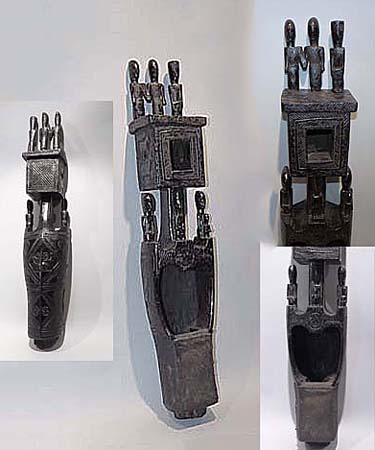
Owner: HWMC
Catalog#: 2AS-CHLT-16-16
Lutes
India 'Dhodro Banam' (Santal) - A
Eastern India
Santal people of Munda ethnic group
Wood, hide
19th century
Length: 29.5 in, Width: 6 in, Depth: 4.5 in
Chordophones – Lutes
This one-string bowed fiddle called dhodro banam comes from the Santal tribal community of Jharkstand and West Bengal, of eastern India. It is a member of the sarinda family, a type of lute with a partially open body that is covered with skin on the lower part. The dhodro banam is played with a bow in the manner of a violin, but in a vertical position and the carving on the top always faces the listener. The Santals play this generally one-stringed instrument as an accompaniment to their songs and dances like the Dasae, Sohrae, Don, Lagre and Karam.
The dhodro banam makers seem to have created basic models that are to be distinguished from one another only by differences in the ornamentation and minor variations in iconography. The figurative representation crowning this instrument are human figures, a preferred characteristic of the Santal. A dark, hard wood was used in the manufacture of the instruments, possibly that of the guloic tree referenced in the myth of origin. The peg and metal string are missing from the photo, but have since been found.
Resource: The Lutes of the Santal | Bengt Fosshag
